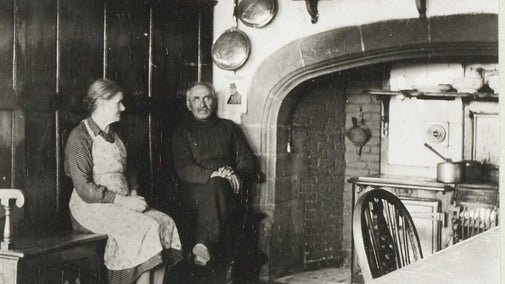
Donate
Everyone needs nature, now more than ever. Donate today and you could help people and nature to thrive at the places we care for.

Ringed plovers have been nesting on Lindisfarne for the last 50 years, with the raised areas of shingle creating the ideal habitat for nest building. Sadly, however, their numbers have severely declined, a trend that is repeated nationwide. Find out how we have identified a local cause to this decline and the steps we're taking to reverse it.
The ringed plover is a small and dumpy wader which stands at only 18–20cm tall. It is almost comical in appearance and is easily identified by its black bib and face mask and its short, black-tipped orange bill. When in flight, look out for a defined, white wing bar.
It is also renowned for its idiosyncratic behaviour. When faced with a predator, the bird will feign a broken wing in an attempt to deflect the predator away from the nest, at which point a miraculous recovery sees the parent make its great escape. Look out also for foraging birds and you'll witness a light-footed dance, mimicking the sound of raindrops over the sand and tricking unsuspecting prey to the surface.
Ringed plovers are resident in the UK and can be seen along the Northumberland coast all year round. They breed in many areas across northern Europe, as well as parts of Canada and Greenland.
The resident population of ringed plovers at Lindisfarne are joined in the winter by European breeders. In the autumn and spring you may glimpse a bird making the long migration between breeding grounds in Greenland or Norway and their overwintering destinations in west and sub-Saharan Africa.
Ringed plover have been nesting on Lindisfarne since the 1970s, with the raised areas of shingle creating the ideal habitat for nest building. Their delicate, speckled eggs sit in shallow scrapes and are perfectly camouflaged among the scattered pebbles and seaweed. The area of shingle surrounding the lime kilns is particularly well suited as the land sits above the spring high-tide mark, meaning nests are protected from flooding.

Sadly, the number of ringed plover breeding on Lindisfarne has severely declined since the 1970s. In 1977, 45 breeding pairs were recorded on the island, compared with just 15 pairs in 2017, representing a decline of 67 per cent. This is a trend occurring not only at Lindisfarne but across the country, leading to the ringed plover being placed on the Birds of Conservation Concern (BoCC) red list.
The population decline on Lindisfarne can be largely attributed to two factors: the sanding over of shingle and the increase in visitor numbers. This has led to loss of suitable habitat and higher levels of disturbance, especially in instances where dogs are off lead.
In an attempt to combat this, we'll be roping off an area of shingle to the south-east of the lime kilns at Castle Point between May and August, providing a disturbance-free zone and allowing these characterful waders the best possible opportunity to breed successfully. It's also possible that if disturbance is kept to a minimum then other species such as the oystercatcher may also be attracted to breed in the area.
If you're planning a visit Lindisfarne this summer, please play your part by affording these wonderful birds the space they need and deserve and keep a sensible distance from them.
With your ongoing support, we're able to continue our vital conservation work. Thank you for helping to protect these special places.

Everyone needs nature, now more than ever. Donate today and you could help people and nature to thrive at the places we care for.

Gordon and Helen have been volunteering twice a week at the Gertrude Jekyll garden at Lindisfarne Castle for several years now. Find out what they have to say about the experience.

From Gertrude Jekyll's Garden to fascinating boat sheds and lime kilns offering a window into Holy Island's industrial past, there's plenty to explore around Lindisfarne Castle.

Discover the history of Lindisfarne Castle and its surrounds, from the area’s industrial past and curious boat sheds to the castle’s renovation and its dedicated caretakers.

Your dog is welcome to join you on the many walking routes on Holy Island and the land around Lindisfarne Castle, a one pawprint rated place. Find out what to be aware of and the facilities available.

Read about our strategy, which focuses on restoring nature, ending unequal access and inspiring more people.

We believe that nature, beauty and history are for everyone. That’s why we’re supporting wildlife, protecting historic sites and more. Find out about our work.